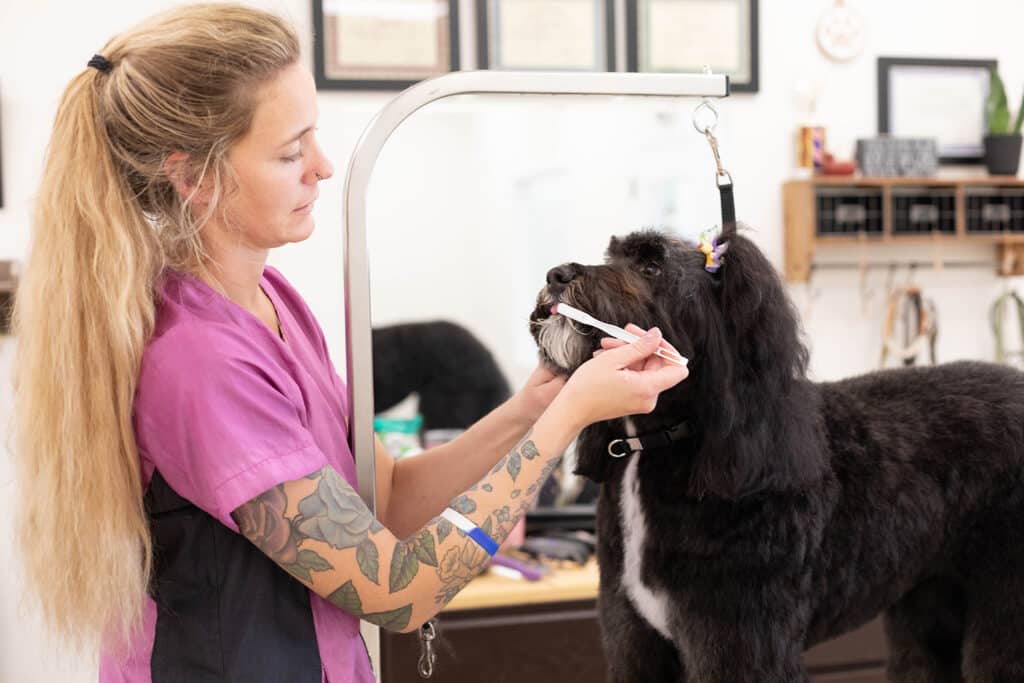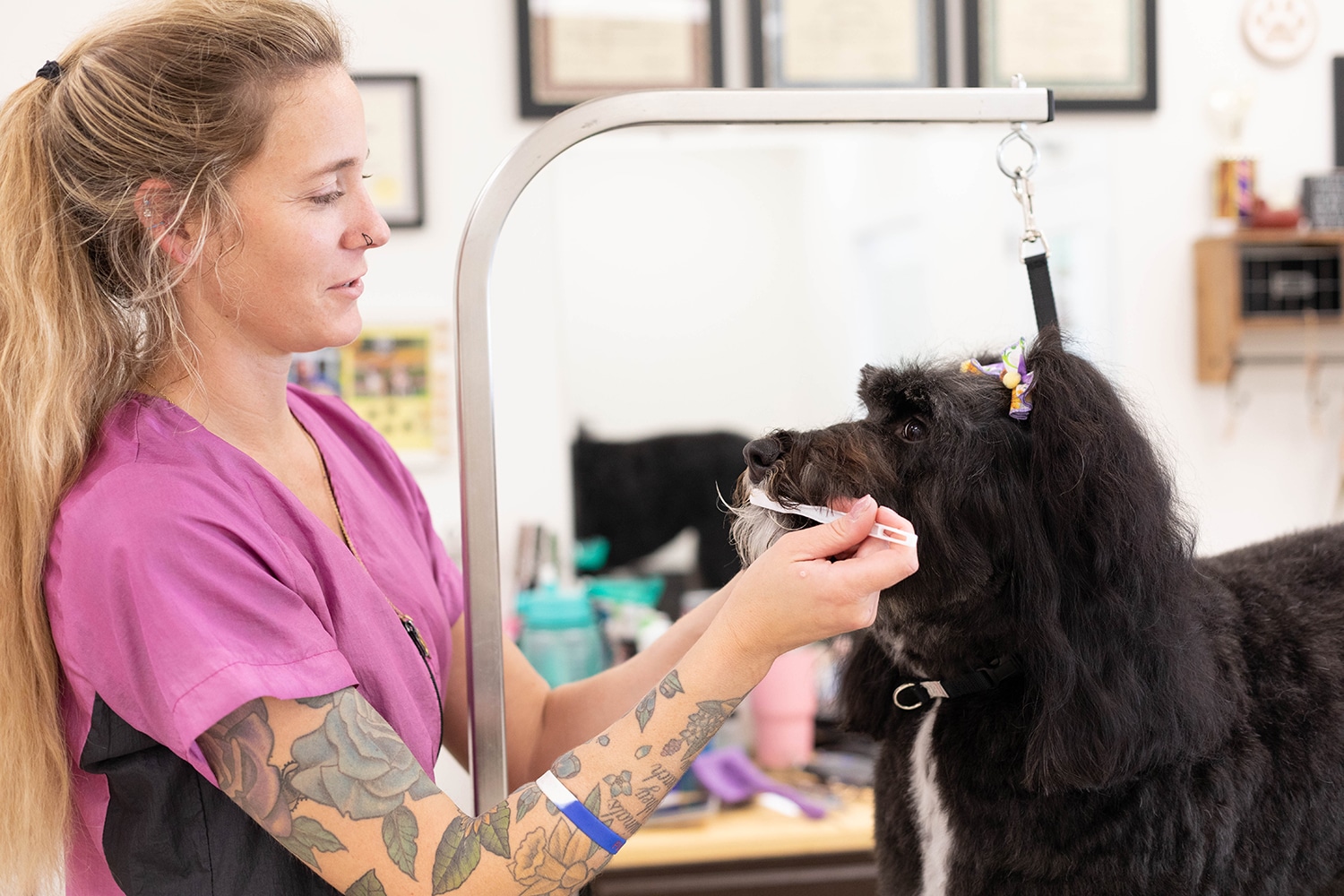Part of being a responsible pet owner means taking care of your pet’s dental hygiene, and it’s one of the most commonly overlooked health concerns by pet parents. If your pet receives no dental care in the first three years of life, it’s the equivalent of a human not seeing the dentist for 20 years!
This blog provides information about your pet’s teeth structure, breaks down the dangers of ignoring your pet’s dental health, and provides important tips and tricks to keep your pet healthy, avoid dental disease, and avoid expensive emergency trips to the vet for dog dental care.
Pets Have Two Sets of Teeth
Dogs and cats have two sets of teeth just like people. First they have their deciduous teeth, or baby teeth. Although they are normally lost by the time they’re 6-8 months old, they are important because they affect the eruption route and final resting position of the permanent, adult teeth.
All dogs, regardless of size and breed, should have 42 permanent canine teeth, also known as secondary teeth. All cats have 30 permanent teeth.
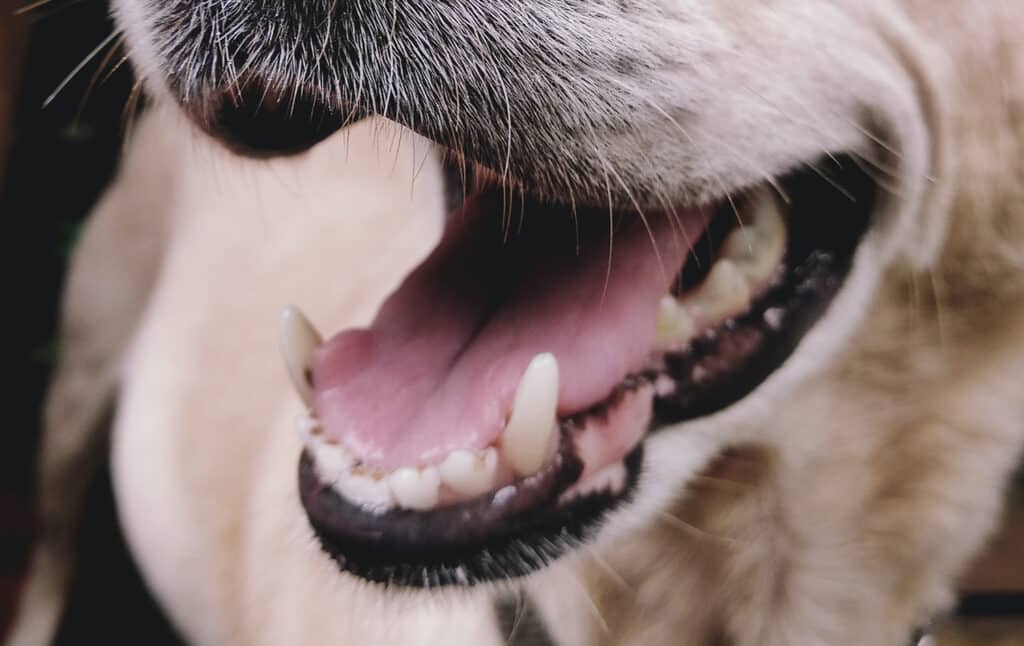
The Multiple Layers of Animal Teeth
Like humans, a pet’s teeth have multiple layers.
The innermost part of the tooth is the pulp cavity, which contains blood vessels, nerve fibers, immune cells and collagen. This is where teeth receive nutrients and blood supply. If the pulp is not taken care of, teeth become infected and can ultimately die.
Dentin is the next layer, and makes up most of the tooth. It contains fluid and nerve fiber, and it’s continuously produced throughout an animal’s life. Chronic wear, cavities and fractures can lead to dentin exposure, leading to fluid shifts, nerve exposure, inflammation, sensitivity and pain.
Cementum is composed of mineralized tissue and covers the dentin layer. This layer helps preserve and anchor the tooth in its socket.
Enamel is the outermost layer above the gum line. It’s a hard, white layer that protects the dentin. Once broken or eroded, it cannot regenerate.
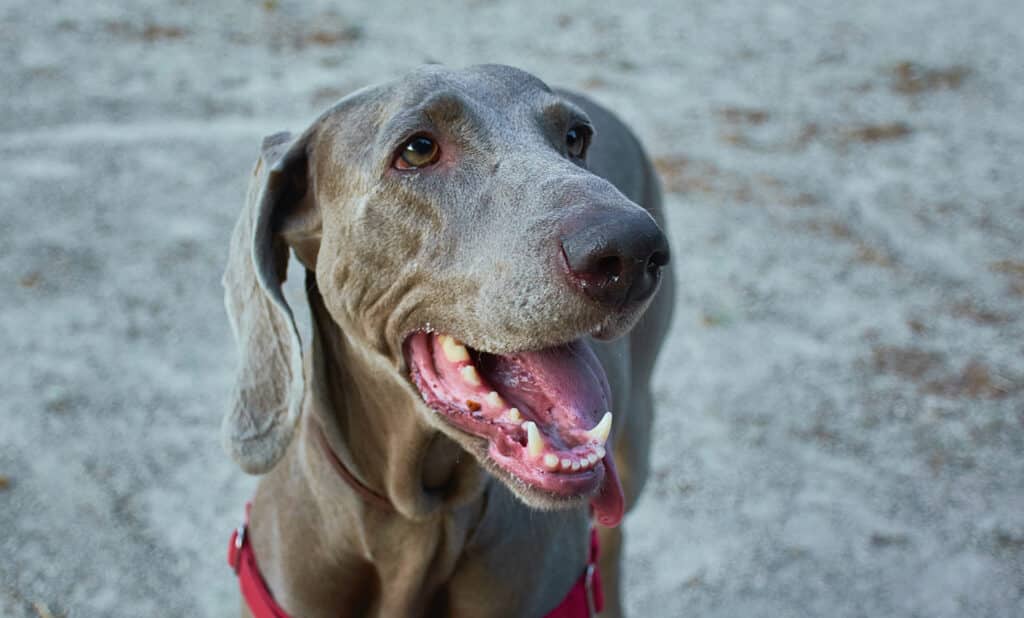
Periodontal Disease
A staggering 80% of cats and dogs over 6 years of age suffer from Periodontal Disease.
Bacteria, food and saliva combine to form plaque. If not removed by brushing or chewing, it reacts with minerals to form a hard, yellow substance called tartar. As the tartar builds up on the tooth and gums, the bacteria causes gum inflammation known as gingivitis.
This bacteria can then invade around the tooth and into the soft tissue and bone leading to loose teeth, infections, gum erosion and extreme pain.
Observing Your Pet’s Mouth
It’s important to regularly check the inside of your cat or dog’s mouth. Frequently doing this allows you to learn your pet’s “normal” and identify problems and irregularities more quickly.
Start slowly. You’ll be hard-pressed to find a dog that enjoys having their teeth examined, so you need to get them used to being touched just like any other exam.
Warning: any pet that is in pain or may be moved into pain can and will bite. Use caution when inspecting your pet’s mouth, especially if you suspect an issue.
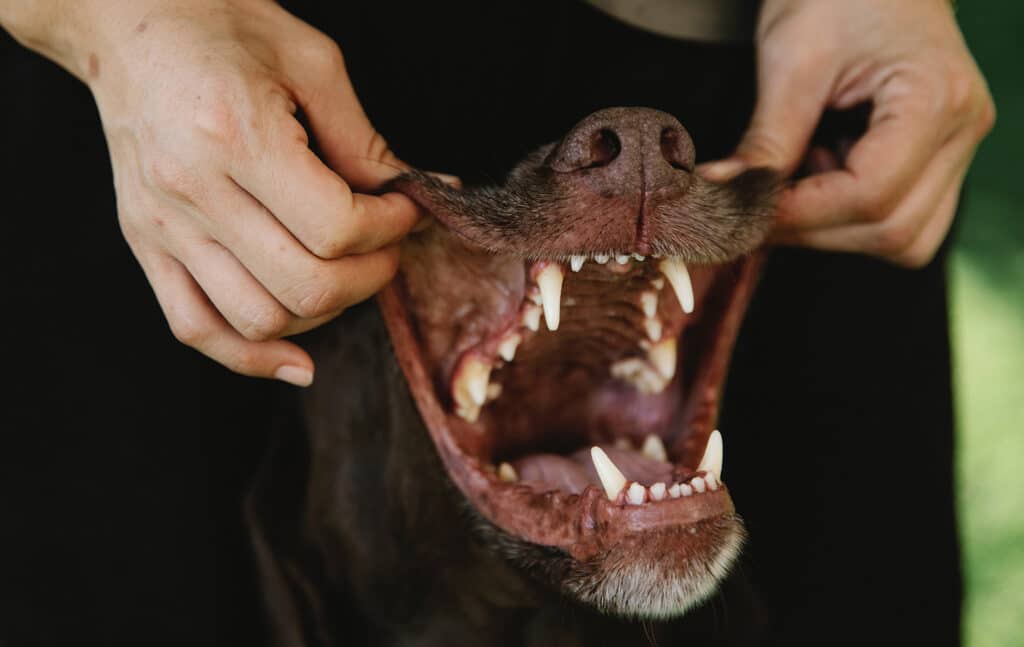
Physical Warning Signs of Periodontal Disease
The first sign of an unhealthy mouth is bad or foul breath. “Doggy breath” and “kitty breath” are not normal and are signs of poor oral hygiene that should be addressed by a veterinarian promptly.
Upon closer examination of your pet’s mouth, you may find red or swollen gums. Gums should be bubble gum pink or black/gray if that is normal for your pet. Check for a brink pink or red line forming at the base of the gums, as this could be an indication of the start of gingivitis.
Check for yellow teeth and buildup along the gum line, yellow-brown tartar, bleeding gums and loose or missing teeth. Also ensure there are no lumps, bumps or warts present.
Examine to ensure gums are clean, smooth and free of blood and irregularities. If you notice any blood, growths or masses in your pet’s mouth, contact your veterinarian.
Behavioral Signs of Periodontal Disease
Some behavioral indicators of periodontal disease include difficulty eating, spending extra time eating, loss of appetite and increased begging. These warning signs may indicate the disease has progressed to the point of severe discomfort or pain and your pet may even have an abscessed tooth.
If your pet shows the above behaviors or acts less interested in food than normal, try to do a thorough investigation of their mouth. If a problem is observed, follow up with your vet as soon as possible.
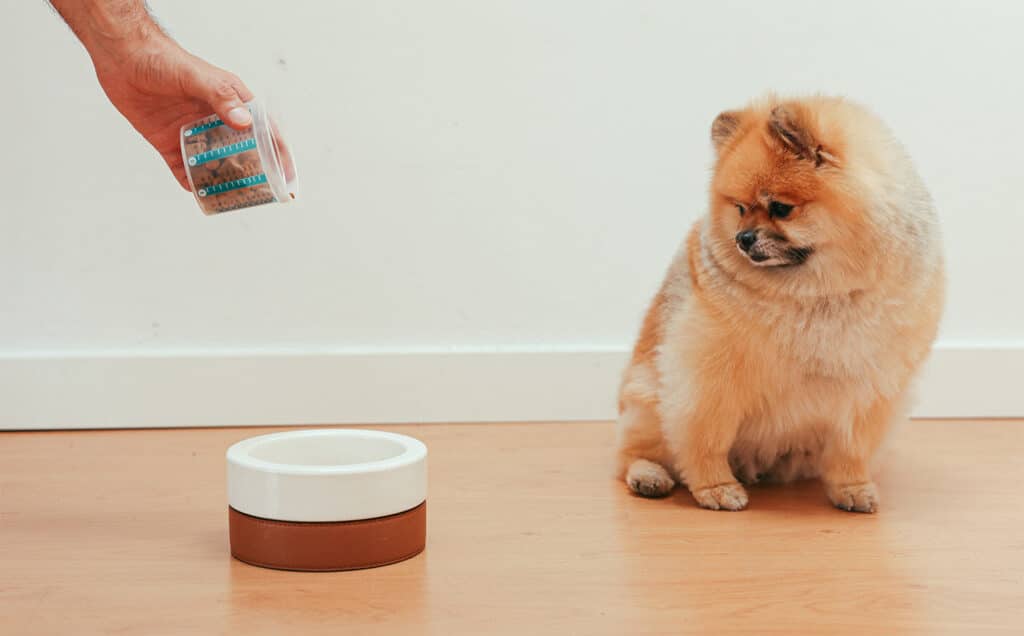
Dog Teeth Brushing
Teeth brushing is the best way to prevent periodontal disease. Brushing your pet’s teeth on a regular basis is important to maintain good oral health, prevent plaque buildup and “doggy breath”.
How to Brush Your Dog’s Teeth
Make sure you dog is comfortable and that your pet is willing to let you touch their muzzle and teeth.
Let your dog inspect the toothpaste and toothbrush.
Help ease your pet into teeth brushing by using positive reinforcement. Try giving your pet treats throughout the process so they associate positive rewards for cooperating with the brushing session.
Approach your dog from the side and gently raise their lip to start brushing. Brush for a few seconds before praising them and giving them a rewarding treat.
Repeat this process as often as you’re able and as long as your dog is willing.
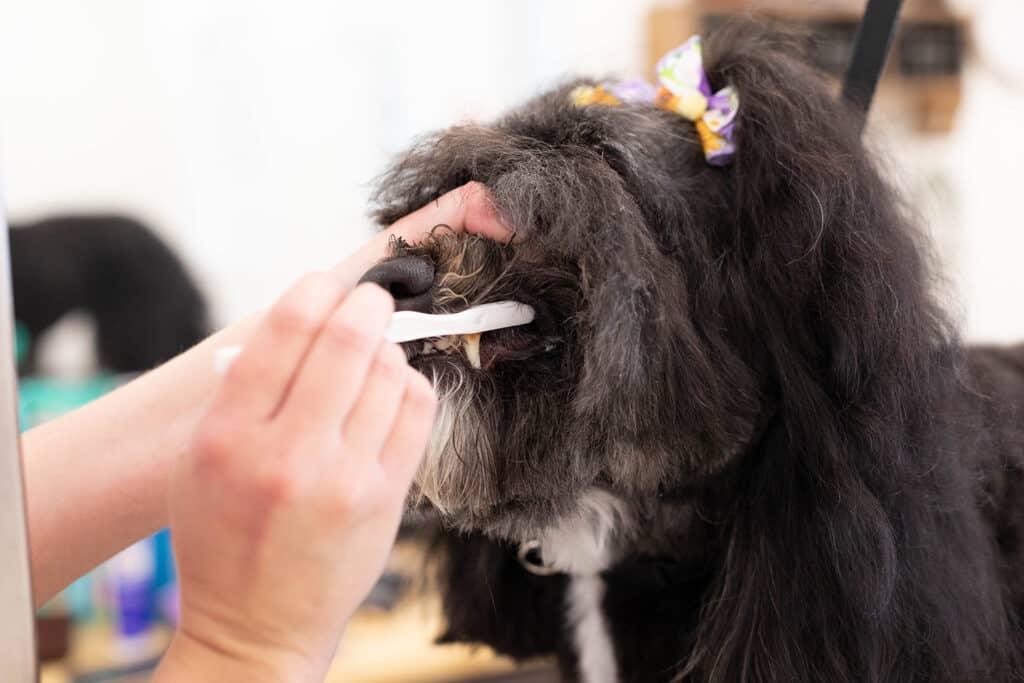
Additional Tips for Brushing Dog Teeth
Don’t force your dog. They should be comfortable.
Get help from another person if needed.
Always wash your hands after brushing a dog’s teeth.
Brush Your Dog’s Teeth Early and Often
Be consistent with tooth brushing. It’s never too late to start, but beginning a teeth cleaning regimen early is best when your pet is still a puppy. Maintain a regular schedule for brushing, and your puppy or adult dog will tolerate it much better than if you clean their teeth infrequently.
Use The Right Products
Do not use human toothpaste. It’s toxic, will hurt your dog and will make them very sick. Purchase toothpaste specifically formulated for dogs. Desirable flavors like chicken or beef make the process more enjoyable and comfortable for your pet.
Use a toothbrush designed for dogs, as human toothbrushes can be too rough. They come in different sizes, so pick one that is appropriate and comfortable for your pet.
Browse Smoochie Pooch’s pet boutique the next time you bring your pet in for grooming and ask us about our pet toothpaste, toothbrushes and other pet dental products.
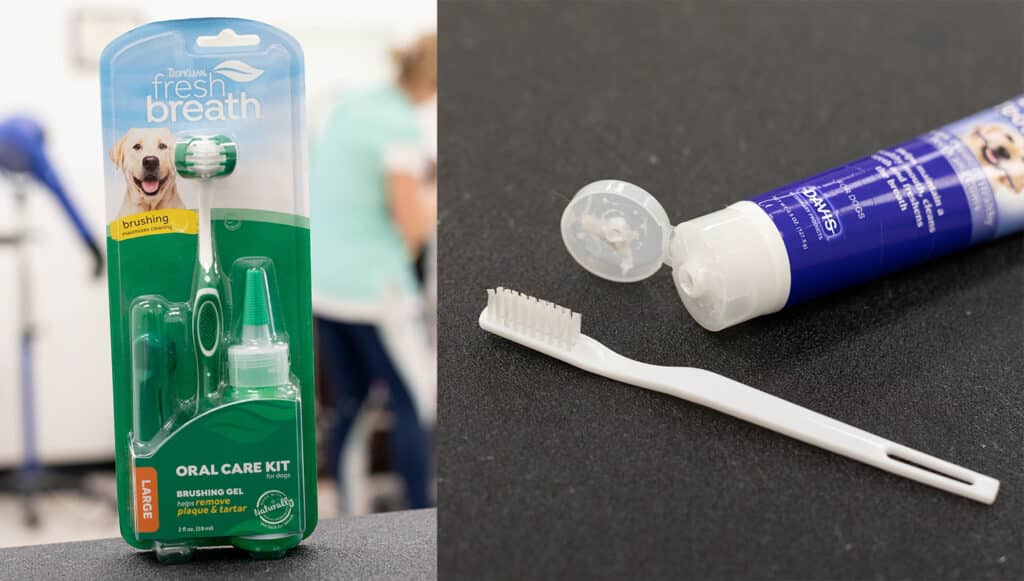
How Often and How Long Should You Brush Your Dog’s Teeth?
Brushing your pet’s teeth should be a relatively quick process. Not all dogs need the same amount of time. Toy breeds have larger teeth crowded in a smaller mouth, so they may require more brushing.
You don’t need to brush the inside of your pet’s teeth – the outside is usually enough. Make sure you brush both sides on the front and bottom teeth.
Other Pet Dental Health Measures
Dental Care Diet
Wet food can be great for giving your pet a hydration boost, but soft or mushy foods have been shown to produce more calculus and plaque than dry food or “kibble”. Dry kibble food has a unique texture that removes plaque and tartar from the tooth surface as your pet chews.
Many pet foods contain hidden sugars, often in the form of corn syrup, fructose or molasses. These sugars can increase tartar and calculus build up, so it’s important to examine the ingredient label on your pet’s food before purchasing.
There are pet foods and treats specifically designed and formulated to assist in reducing tartar and plaque build up. Both prescription and non prescription diets are available.
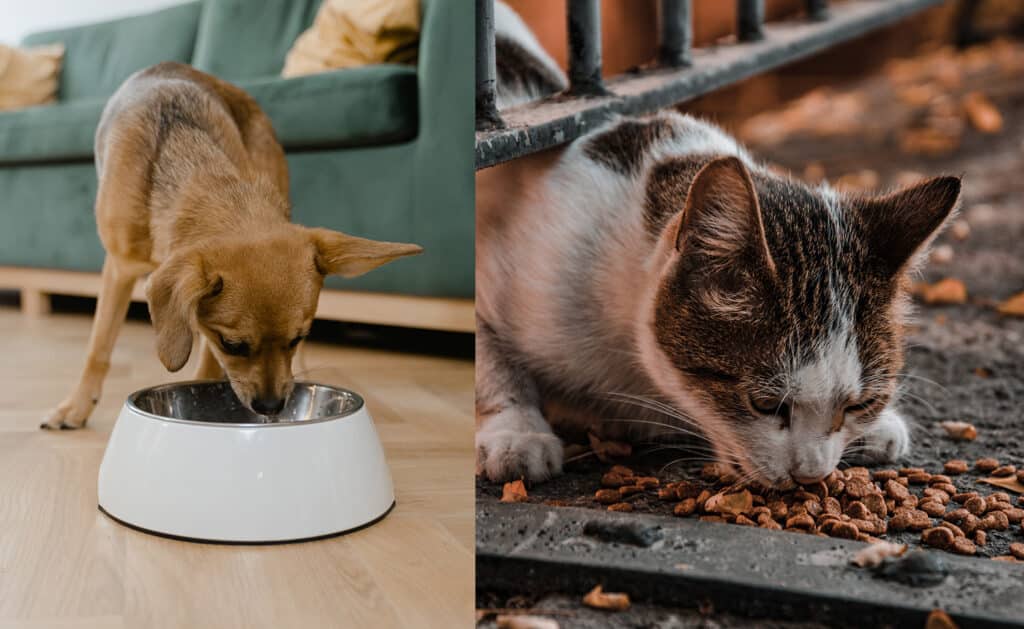
Dental Chews and Bones
Similar to brushing, dental chews and bones mechanically scrape the tooth’s surface, removing plaque and tartar. The longer your pet chews, the more it works.
While dog chews and bones are great, keep in mind that this is not a complete solution for dental care. Unless your pet is utilizing both sides of their mouth against each surface of every tooth, this will only be partially effective. You should still utilize tooth brushing as a preventative measure if your pet allows it.
Plaque Busters and Whimzees Dental Treats are a couple of great options, as are uncooked lamb and goat bones. Tip: do not use cooked bones – they can splinter and require a costly trip to your vet.
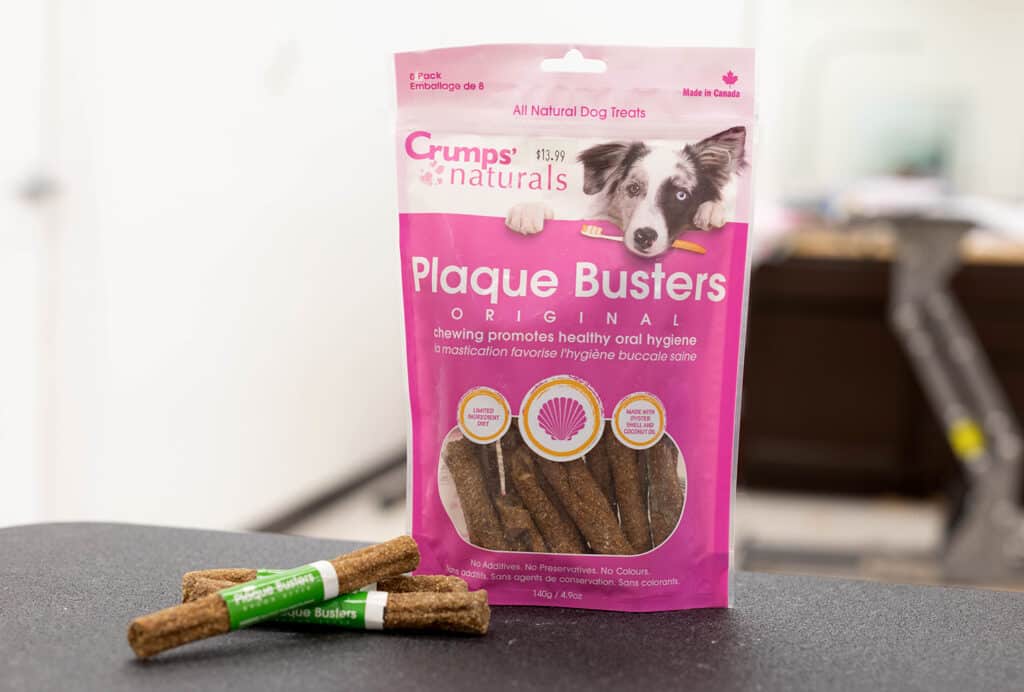
Mouth Rinses and Water Additives
There are great antibacterial water rinses available that can be squirted directly into your pet’s mouth or soaked onto a toothbrush, cloth or cotton tips and then applied and wiped onto teeth.
Water additives won’t reverse dental disease or health issues, but they can help to slow the growth of bacteria and help freshen the breath. Tropiclean makes several water additives, and some not only benefit dental health but also benefit digestive health as well.
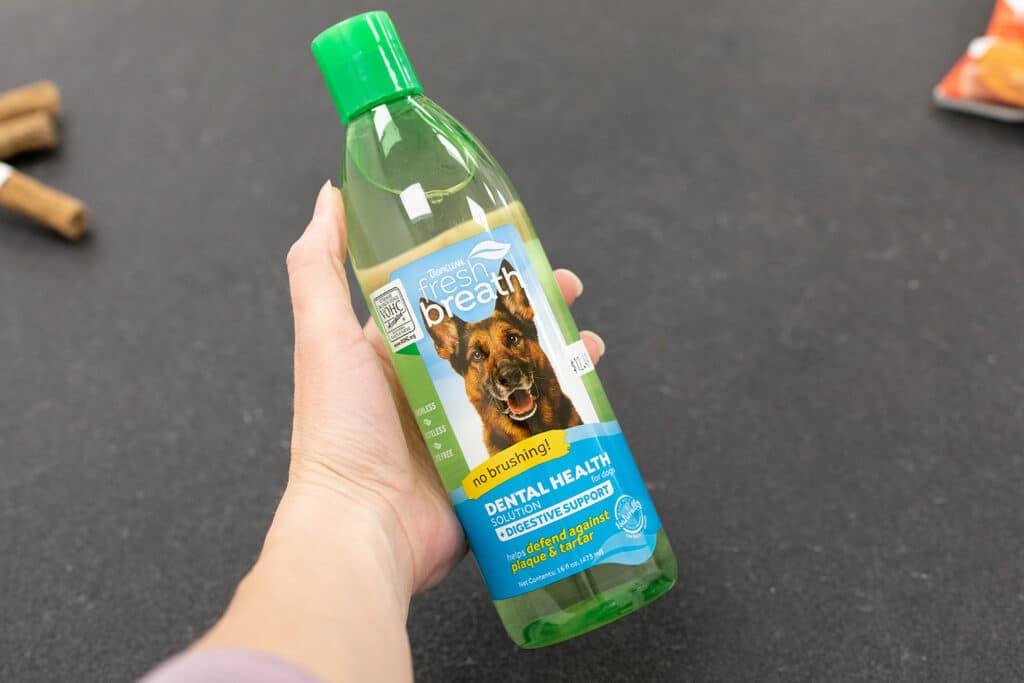
Dental Toys
Toys are great for occupying your pet and protecting their teeth. Dental toys work in much the same way as dental chews and bones. They are often flavored and generally last a little longer than an edible treat. Rubber dog toys such as Kong dental toys are great at helping break down tartar buildup over time.
Yearly Dental Care at Your Vet’s Office
Scheduling a yearly vet visit for a professional cleaning and dog dental hygiene care is great for pets who don’t tolerate having their teeth brushed, as vets have the ability to use general anesthesia. During the process, your pet’s mouth will be cleaned and cleared of any tartar along the gum line.
This is also a good option for pets who don’t like eating food in dry kibble form.
It can be very expensive to have a veterinarian clean your pet’s teeth. Taking action at home or at your professional grooming salon to prevent bacteria and plaque buildup should be your first steps if you want to minimize the cost of professional dental cleaning for your pet.
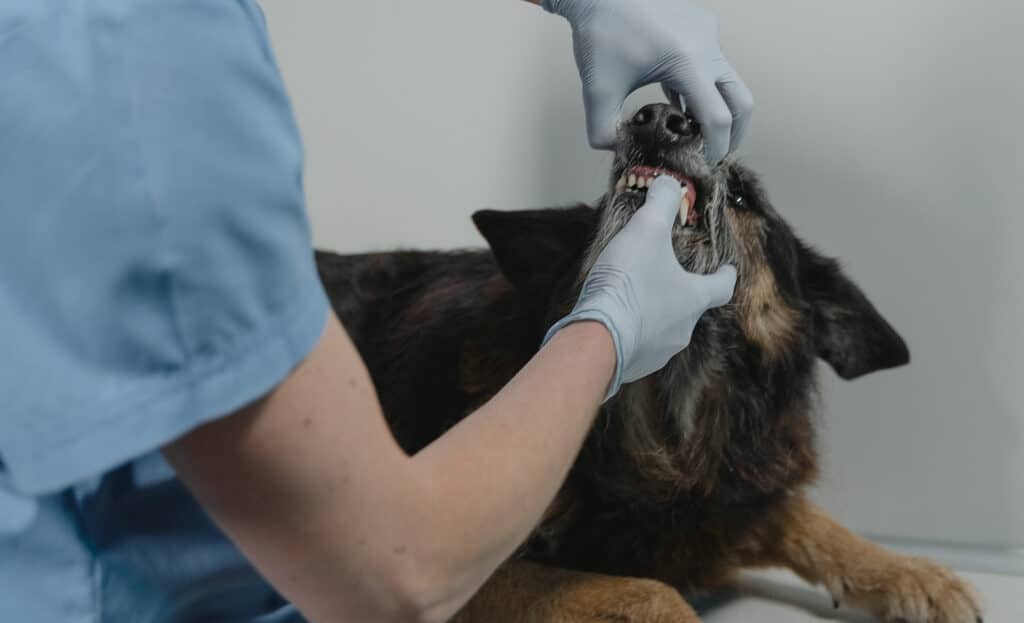
Adding Dog Dental Health Care to Your Dog Grooming Routine
Most professional pet groomers offer teeth brushing services. If you haven’t already, try adding a tooth brushing service to your grooming session.
Smoochie Pooch pet stylists and groomers are trained to utilize flavorful, enzymatic toothpaste specially formulated for dogs along with a clean, sterile dog toothbrush for each brushing session. The more consistently your pet’s teeth are brushed, the better their dental health will be.
We’re sorry, but we do not offer cat tooth brushing services at this time.
Ask your professional groomer what they think of your dog’s dental health. Groomers see many scenarios and can advise whether it may be time to seek advice from your vet.
